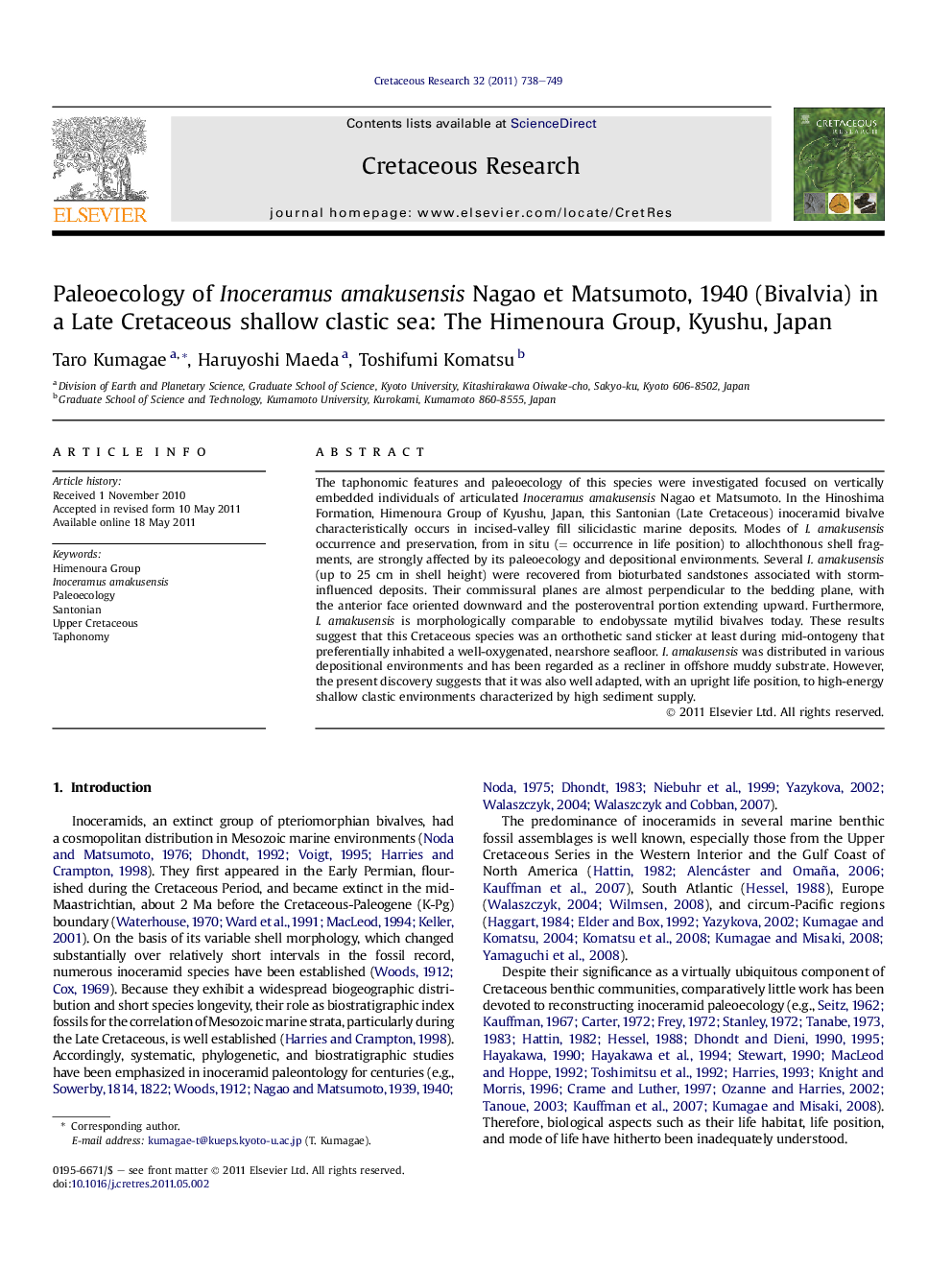| کد مقاله | کد نشریه | سال انتشار | مقاله انگلیسی | نسخه تمام متن |
|---|---|---|---|---|
| 4747414 | 1359909 | 2011 | 12 صفحه PDF | دانلود رایگان |

The taphonomic features and paleoecology of this species were investigated focused on vertically embedded individuals of articulated Inoceramus amakusensis Nagao et Matsumoto. In the Hinoshima Formation, Himenoura Group of Kyushu, Japan, this Santonian (Late Cretaceous) inoceramid bivalve characteristically occurs in incised-valley fill siliciclastic marine deposits. Modes of I. amakusensis occurrence and preservation, from in situ (= occurrence in life position) to allochthonous shell fragments, are strongly affected by its paleoecology and depositional environments. Several I. amakusensis (up to 25 cm in shell height) were recovered from bioturbated sandstones associated with storm-influenced deposits. Their commissural planes are almost perpendicular to the bedding plane, with the anterior face oriented downward and the posteroventral portion extending upward. Furthermore, I. amakusensis is morphologically comparable to endobyssate mytilid bivalves today. These results suggest that this Cretaceous species was an orthothetic sand sticker at least during mid-ontogeny that preferentially inhabited a well-oxygenated, nearshore seafloor. I. amakusensis was distributed in various depositional environments and has been regarded as a recliner in offshore muddy substrate. However, the present discovery suggests that it was also well adapted, with an upright life position, to high-energy shallow clastic environments characterized by high sediment supply.
► The first record of a Santonian inoceramid, Inoceramus amakusensis in upright life position.
► This species inhabited storm- and wave-influenced, well-oxygenated sandy bottoms during mid-ontogeny.
► Its life position is comparable to that of endobyssate mytilids or semi-infaunal sand stickers.
► I. amakusensis, possibly by changing its life habit, could have adapted to various marine environments.
Journal: Cretaceous Research - Volume 32, Issue 6, December 2011, Pages 738–749